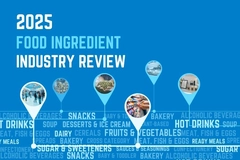
- Industry news
Industry news
- Category news
Category news
- Reports
- Key trends
- Multimedia
Multimedia
- Journal
- Events
- Suppliers
- Home
- Industry news
Industry news
- Category news
Category news
- Reports
- Key trends
- Multimedia
Multimedia
- Events
- Suppliers
Ultra-processed foods debate heats up again as SACN releases statement report

12 Jul 2023 --- The Scientific Advisory Committee on Nutrition (SACN) has released a position statement on ultra-processed foods (UPF) and evaluated its current classification systems, sustainability practices and production methods. The committee also reviewed existing evidence on levels of food processing and its implication on health.
SACN says food processing plays several roles in our food system, such as making inedible foods edible, prolonging shelf life, modifying the nutritional composition and increasing the convenience and palatability of products.
However, the definition of processed foods is a debate still ongoing as there is no global definition of UPF, although it is associated with adverse health outcomes due to usually being high in energy, saturated fats, sugar and salt while lower in fiber.

Foods of this nature have therefore been consumed more, and due to low manufacturing and marketing costs, it’s more easily accessible.
Nutrition Insight speaks with a Department of Health and Social Care (DHSC) representative about the report.
“We have noted the SACN’s position statement on processed foods and health, which aligns with the firm action we are taking against foods high in saturated fats, salt or sugar.”
Restricting promotion
The spokesperson further says it has introduced legislation to restrict the placement and promotion of such products in supermarkets to discourage unhealthy food choices.
“Our salt reduction program has reduced the amount of salt in bread by around 20%, and our voluntary sugar reduction program has reduced the amount of sugar in foods popular with children, including breakfast cereals and yogurt.”
“Our Soft Drinks Industry Levy has also nearly halved the sugar in soft drinks.”
The soft drink levy was shown in a study to have ”saved 5,000 children from obesity,” which was counter-argued by campaigners calling for more health changes in the F&B industry.
“We have also introduced calorie labeling on food sold in restaurants, cafes and takeaways to empower people to make informed personal choices about their lifestyle,” says the DHSC.
 Most food processing classification systems do not consider nutrient composition. Considering nutrition density
Most food processing classification systems do not consider nutrient composition. Considering nutrition density
Pete Wilde, professor of food structure, colloids and digestion at Quadram Institute Bioscience, UK, highlights that most food processing classification systems, including NOVA, do not consider nutrient composition.
“This means processed foods with a healthy nutrient profile or energy density will be considered UPF. It is good to see that SACN has listed several potential mechanisms or hypotheses underpinning the impact of UPFs on health, including high energy density, low nutrient and fiber content, lack of food structure or matrix,” Wilde notes.
He further argues that there is often very little difference in these factors between artisanal or homemade versions of food compared with commercially manufactured versions. Recently, an expert panel gathered to discuss UPF and claimed that there is no proven relationship between the degree of processing and the healthiness of a food product.
“Therefore, their health impact is likely to be similar, but only the latter would be regarded as UPF and therefore less healthy,” says Wilde.
Missing the bigger picture?
Dr. Duane Mellor, a registered dietitian and senior lecturer at Aston Medical School, England, says “It is good to see that the SACN report acknowledges that in the research they looked at, often individuals who are said to consume more ultra-processed foods would be eating a diet that would be considered to be generally less healthy – which could mean that it might be the overall nutritional quality of the diet that is the issue, rather than the processing of the food itself.”
She explains that the SACN report also points to the fact that much of the research and reporting on the harmful effects of UPFs has not accounted for factors such as smoking, income and body weight.
“So, it questions the value of using ultra-processed foods as a definition compared to assessing whether a diet is high in fat, salt and sugar or is generally less healthy. It also makes good recommendations about the need for future research.”
“What is missing, however, is a focus on what people should be trying to eat more [of] and does not consider the socio-economic inequities often associated with a less healthy diet.”
“Perhaps instead of focusing on what we should be eating less of, we should be focusing on how we can enjoy a healthier dietary pattern that is available to all in an equitable way without judgment,” Mellor argues.
The USDA USDA has demonstrated the possibility of building a healthy diet with UPF in its new study.
USDA has demonstrated the possibility of building a healthy diet with UPF in its new study.
Meanwhile, scientists at the US Department of Health and Agriculture (USDA) have demonstrated the possibility of building a healthy diet with UPF in a study published in the Journal of Nutrition, using the NOVA scale and advice from the Dietary Guidelines for Americans (DGA) Committee.
“The study is a proof-of-concept that shows a more balanced view of healthy eating patterns, where using ultra-processed foods can be an option,” says Julie Hess, ARS Research Nutritionist at the Grand Forks Human Nutrition Research Center.
“According to current dietary recommendations, the nutrient content of a food and its place in a food group is more important than the extent to which a food was processed,” Hess underscores.
Recently, the DGA’s committee was appointed with new members whose ties to the food and pharmaceutical industries were questioned. The health watchdog Center for Science in the Public Interest called for transparency from individual members’ financial ties to the industry.
The scientists from the USDA say that the study evidences the role of eating various foods in a healthy diet while also stressing the need for more research.
By Beatrice Wihlander










